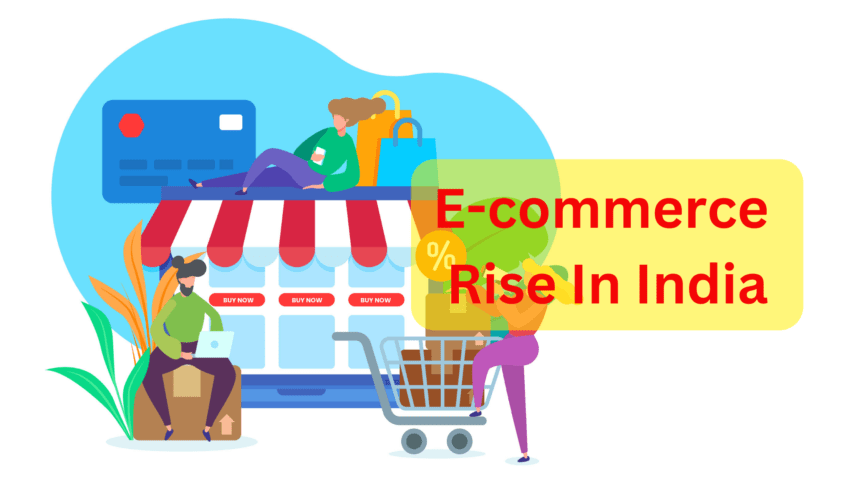Introduction
E-commerce in India has undergone a significant transformation over the past decade, driven by a confluence of technological advancements, changing consumer behaviors, and supportive government policies. This article delves into the myriad facets of this burgeoning industry, exploring the opportunities it presents and the challenges it faces.
Historical Context
Pre-E-commerce Retail Landscape
Before the advent of e-commerce companies in India, the retail sector was dominated by small, unorganized shops and large, organized retail chains. The shopping experience was predominantly physical, with consumers relying on local markets and malls for their needs.
Early Adoption of Online Shopping
The initial phase of e-commerce in India was marked by skepticism. However, with pioneers like Flipkart and Snapdeal entering the market, consumers began to warm up to the idea of online shopping. These early adopters laid the groundwork for the expansive growth seen today.
Growth Drivers
Internet Penetration and Smartphone Usage
The widespread availability of affordable smartphones and the internet has been a game-changer for e-commerce in India. With over 600 million internet users, India boasts one of the world’s largest online markets. This connectivity has bridged the gap between urban and rural areas, bringing e-commerce to the masses.
Government Initiatives
Government programs like Digital India have played a pivotal role in promoting digital literacy and infrastructure. Initiatives such as BharatNet aim to provide high-speed internet to rural areas, further expanding the market for e-commerce in India.
Payment Innovations
The introduction of secure and user-friendly payment systems, such as UPI and digital wallets, has simplified online transactions. This innovation has boosted consumer confidence, making online shopping more accessible and convenient.
Key Market Players
Domestic Giants
Companies like Flipkart, Reliance JioMart, and Paytm Mall dominate the landscape of e-commerce platform. Their extensive logistics networks and deep understanding of the local market give them a competitive edge.
International Entrants
Global players such as Amazon and Walmart have made significant inroads into the e-commerce in India. Their investment in infrastructure and technology has raised the bar for local competitors, driving innovation and improving service quality.
Consumer Behavior Shifts
Urban vs. Rural Trends
Urban consumers are quick to adopt new technologies and trends, leading the charge in the growth of e-commerce in India. Meanwhile, rural areas, though slower to adapt, are rapidly catching up as internet access and digital literacy improve.
Demographic Preferences
Millennials and Gen Z are the primary drivers of e-commerce in India, favoring the convenience and variety offered by online platforms. Their preferences for personalized shopping experiences and instant gratification are shaping the future of the industry.
Technological Advancements
AI and Machine Learning
Artificial intelligence and machine learning are revolutionizing e-commerce companies in India. From personalized recommendations to chatbots providing customer support, these technologies enhance the shopping experience and streamline operations.
Logistics and Delivery Innovations
Advancements in logistics, such as drone deliveries and automated warehouses, are improving efficiency and reducing delivery times. These innovations are crucial in meeting the growing demands of e-commerce companies.

Sectoral Growth
Fashion and Apparel
Fashion and apparel have seen explosive growth in the e-commerce sector. Online platforms offer a wide range of options, catering to diverse tastes and preferences, driving significant sales within e-commerce in India.
Electronics and Gadgets
The convenience of comparing prices and features online has made e-commerce in India a preferred channel for purchasing electronics and gadgets. The availability of exclusive online deals further attracts consumers.
Grocery and Essentials
The pandemic accelerated the shift to online grocery shopping. E-commerce platforms in India have expanded their reach, offering fresh produce and daily essentials delivered to consumers’ doorsteps.
Opportunities for Entrepreneurs
Startup Ecosystem
India’s e-commerce sector is fertile ground for startups. Entrepreneurs are leveraging technology to create innovative solutions, from niche marketplaces to AI-driven customer service tools within the realm of e-commerce in India.
Investment and Funding Landscape
The robust startup ecosystem is supported by a dynamic investment landscape. Venture capitalists and angel investors are keen to back promising e-commerce ventures, fueling growth and innovation in e-commerce platform.
Ecommerce Evolved: The Essential Playbook To Build, Grow & Scale A Successful Ecommerce Business
Regulatory Environment
Policy Support
The Indian government has implemented policies to support the growth of e-commerce sectors, including relaxed FDI regulations and incentives for digital payments. These measures have created a conducive environment for the industry.
Compliance and Legal Framework
Navigating the regulatory landscape remains a challenge for e-commerce sectors. Companies must adhere to a complex web of laws related to consumer protection, data privacy, and taxation.
Challenges Facing E-commer
Infrastructure Limitations
Despite significant improvements, infrastructure remains a bottleneck for e-commerce in India. Poor road connectivity and unreliable electricity supply in some regions hinder efficient delivery and operations.
Cybersecurity Threats
As e-commerce in India grows, so do cybersecurity threats. Protecting consumer data and ensuring secure transactions are paramount to maintaining trust and safeguarding the industry’s future.
Market Competition
The fierce competition among e-commerce players drives innovation but also squeezes profit margins. Companies must continuously evolve to stay ahead in this cutthroat market of e-commerce sectors.
Role of Social Media
Influencer Marketing
Social media influencers play a crucial role in shaping consumer preferences. Brands leverage influencer marketing to reach targeted audiences and build credibility within the e-commerce companies.
Social Commerce
Platforms like Instagram and Facebook are integrating shopping features, blurring the lines between social media and e-commerce. This trend offers new avenues for sales and customer engagement in e-commerce.
E-commerce and Employment
Job Creation
The e-commerce boom has created millions of jobs in India, from delivery personnel to data analysts. This sector is a significant contributor to India’s employment landscape.
Skill Development
As the industry evolves, there is a growing demand for skilled professionals. E-commerce companies in India are investing in training programs to equip their workforce with the necessary skills.
Impact on Traditional Retail
Retailer Adaptations
Traditional retailers are adapting to the digital age by establishing an online presence. Many are adopting omnichannel strategies to integrate their physical and digital operations in e-commerce in India.
Hybrid Business Models
Hybrid models, combining brick-and-mortar stores with online platforms, are becoming increasingly popular. This approach offers the best of both worlds, enhancing customer experience and expanding market reach in e-commerce in India.
All E-commerce packing solutions
Case Studies
Successful E-commerce Ventures
Examining successful ventures like Flipkart and Nykaa provides insights into best practices and strategies that drive growth in India’s e-commerce sector.
Lessons from Failures
Analyzing failed e-commerce ventures helps identify common pitfalls and challenges, offering valuable lessons for new entrants and established players alike within e-commerce companies.
Future Trends
Personalization and Customer Experience
Personalization is the future of e-commerce in India. Leveraging data analytics to offer tailored recommendations and experiences will be key to winning customer loyalty.
Sustainability in E-commerce
Sustainability is becoming a crucial consideration for e-commerce. Companies are exploring eco-friendly packaging and sustainable sourcing to meet consumer demands for ethical practices.
Cross-Border E-commerce in India
Export Opportunities
E-commerce opens up new export opportunities for Indian businesses. Selling to global markets via online platforms can significantly boost revenue and growth within India’s e-commerce.
Global Marketplaces
Platforms like Amazon and Alibaba offer Indian sellers access to a global customer base, facilitating cross-border trade and expanding their reach in e-commerce in India.
Consumer Protection
Quality Assurance
Ensuring product quality is vital for maintaining consumer trust. E-commerce platforms in India are implementing stringent quality checks and certifications to uphold standards.
Return Policies
Flexible and hassle-free return policies are essential for customer satisfaction. They enhance the shopping experience and build confidence in online purchases within e-commerce platform.
Logistics and Supply Chain Management

Last-mile Delivery
Last-mile delivery is a critical component of the e-commerce supply chain. Efficient and timely delivery directly impacts customer satisfaction and retention in e-commerce.
Inventory Management
Advanced inventory management systems help e-commerce companies in India maintain optimal stock levels, reduce costs, and improve order fulfillment rates.
Digital Payments Revolution

UPI and Digital Wallets
Unified Payments Interface (UPI) and digital wallets have revolutionized the payment landscape. They offer secure, quick, and convenient transaction methods, driving the growth of e-commerce in India.
Cryptocurrency and E-commerce
While still in its infancy, cryptocurrency presents exciting possibilities for e-commerce. It offers an alternative payment method that could redefine online transactions.
Conclusion
Summary of Opportunities and Challenges
The rise of e-commerce in India presents a plethora of opportunities, from entrepreneurial ventures to technological advancements. However, challenges such as infrastructure limitations and cybersecurity threats must be addressed to sustain growth.
The Road Ahead for India’s E-commerce
The future of e-commerce in India looks promising. With continuous innovation, supportive policies, and an ever-expanding digital population, the sector is poised for unprecedented growth, transforming the way Indians shop and do business.
For more content follow Humstory













